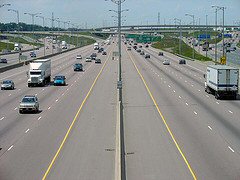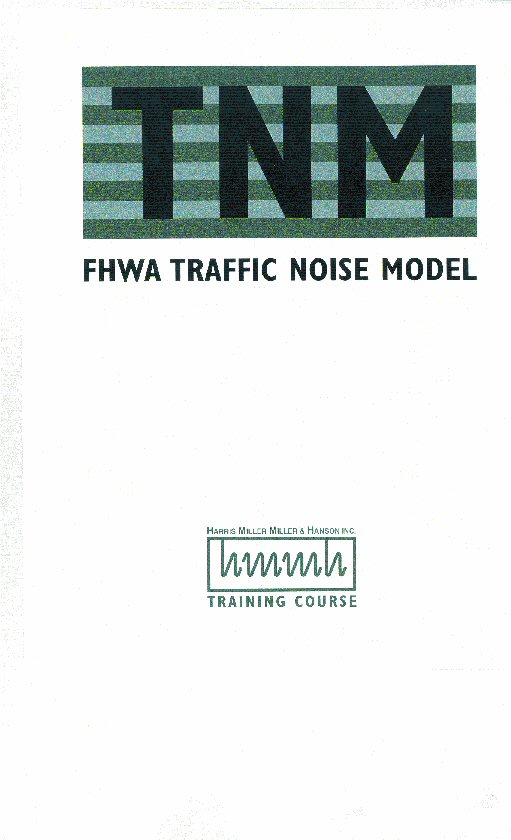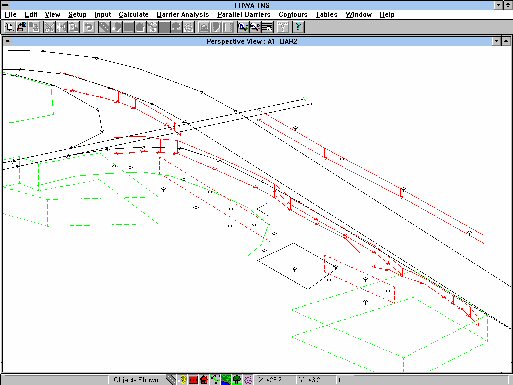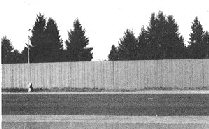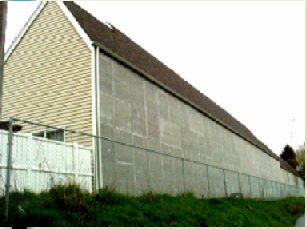Noise Compatible Planning
Workshops
NCP Workshop PowerPoint Presentation in HTML format
Also available in PowerPoint (13.7Mb)
I. Implementing Noise Compatible Land Use
Lesson 1
Roadway Noise and FHWA Guidelines
Federal Highway Administration
II. Roadway Travel

III. What is Noise?
- Loud Sound
- Annoying, Unwanted Sound
IV. Negative Effects of Sound
- Lowers the quality of life
- Can impact outside conversation
- May deter some development
- Some studies show harmful health effects
V. Common Noise Levels
| Jet aircraft take off |
Uncomfortably loud |
120 dBA |
| Lawnmower , Vacuum |
Moderately loud |
70 dBA |
| Library |
Very quiet |
30 dBA |
VI. Who's Responsible?
- Federal Highway Administration Sets National Guidelines
- States Implement Federal and State Guidelines
- Local Governments Enact Land Use Policies
VII. Noise Assessments
- Required as part of NEPA Process
- Determine whether there are sensitive receivers
- Computer modeling
- Review of land use plans
- Aerial photography
VIII. Federal Guidelines for Noise Abatement
- 23 CFR Part 772: Procedures for Abatement of Highway Traffic Noise and Construction Noise
- "..establish requirements for information to be given to local officials for use in the planning and design of highways..."
IX. Section 772.5: Definitions
- Type I (Eligible for FHWA Funding)
- Projects on new location
- Physical alteration of horizontal and/or vertical alignment
- Increase in the number of through travel lanes
- Type II (FHWA Will Not Fund; States May)
- A proposed Federal or Federal-aid highway project for noise abatement on an existing highway.
X. Section 772.13(b) Federal Participation
- Federal funding for Type II projects approved:
- For projects approved before 11/28/95
- Along lands where development predated any highway
- For areas not previously rejected for a barrier in a Type I project
XI. FHWA Approach to Roadway Noise
- 3-Part Approach to Traffic Noise Control
- Source Control
- Reduction Measures in Highway Construction
- Noise Compatible Land Use Planning
XII. Source Control: Noise Sources for Heavy Trucks
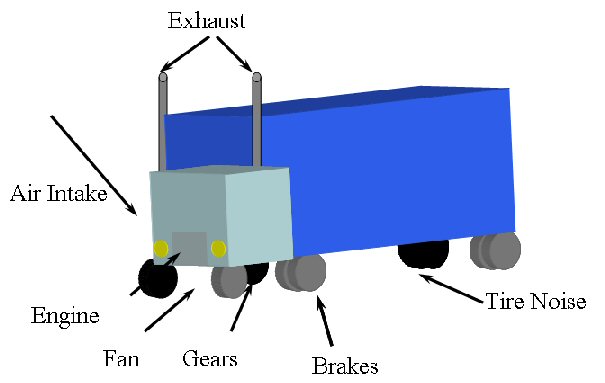
XIII. Measuring Sound
- Decibels
- Are a logarithmic scale
- Are based on values of 10
- Sound measurement is weighted to what the human ear can hear (A-weighted)
- Descriptor will be the hourly equivalent sound level (LAeq1h)
XIV. The TNM Model
XV. Noise Criteria
| Exterior (residences, schools, parks, and churches) |
Leq 65 dBA |
| Exterior (commercial) |
Leq 70 dBA |
| Interior |
Leq 50 dBA is used |
XVI. N C P Mitigation Strategies
- Commercial, Retail, Office Uses
- Open Space
- Thoughtful Orientation of Residential Uses and Materials
XVII. Residential - Commercial
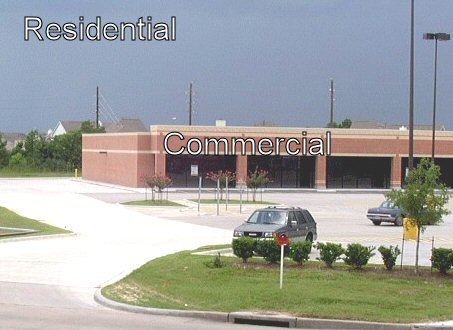
XVIII. Noise Reducing Construction Design
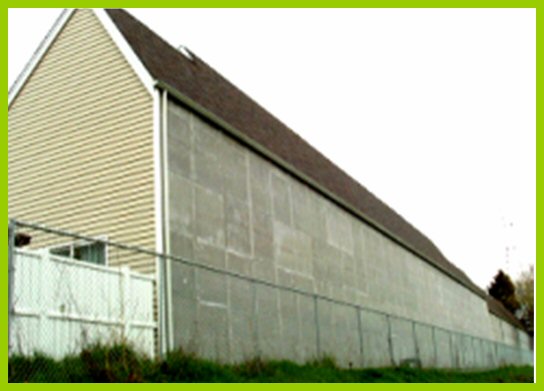
XIX. Implementing Noise Compatible Land Use
Lesson 2
Overview Noise Compatible Land Use Planning
XX. Lesson 2: Overview Noise Compatible Planning
- What Constitutes NCP?
- Benefits of NCP
- Potential Hindrances to Implementing NCP
XXI. What Constitutes NCP?
NCP addresses potential highway noise before problems occur
Appropriate development that can accommodate roadway noise is encouraged next to highways
XXII. Why Talk About Noise Compatible Land Use Planning?
- Opportunity Costs (more roadway and construction $)
- May Block Light and "Close-in" Neighborhoods
XXIII. PURPOSE
- Less Noise Sensitive Land Uses
(Commercial, Office, Retail, Industrial)
- Promote Use of Open Space
(Walking & Bike Paths, Recreational Uses)
- Reorient Residential w/ Less Sensitive Uses Away from the Roadway
XXIV. Commercial, Retail, Office
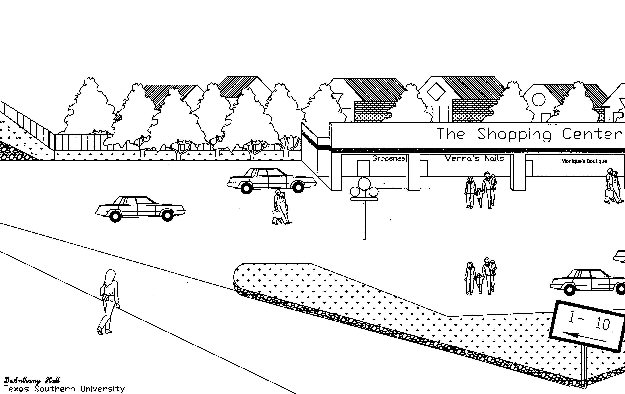
XXV. Open Space

XXVI. Building Orientation or Construction Materials
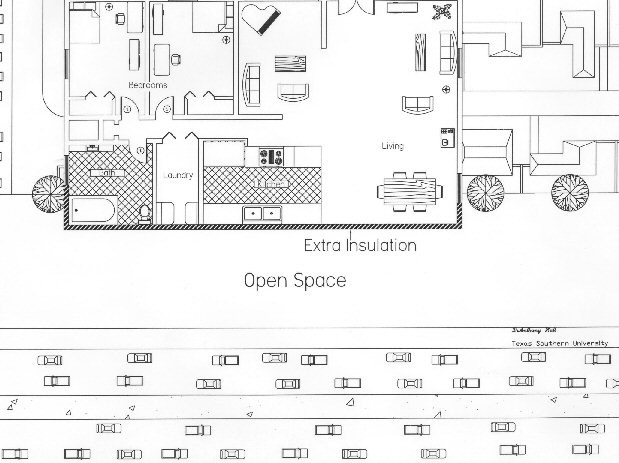
XXVII. Setback
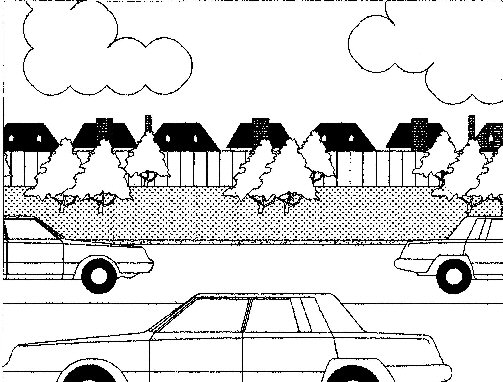
XXVIII. Benefits of NCP
Undesirable effects of highway traffic noise are eliminated or reduced by encouraging less noise sensitive land uses next to highways
XXIX. Benefits of NCLUP (cont)
- Proactive planning
- Better quality of life
- Reduces residential complaints
- Future cost savings
- Property value increases
- Promotes public-private shared responsibility
XXX. Hindrances to Implementing NCP
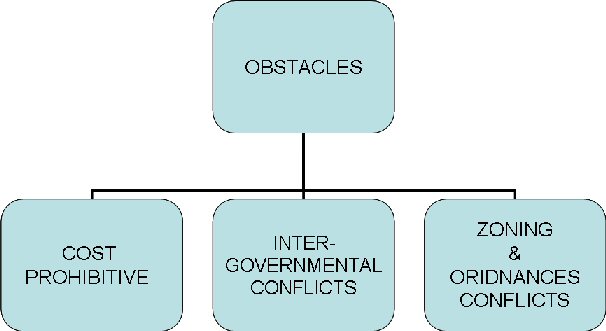
XXXI. Role of Leaders and Policy Professionals
Encourage:
- Increased use of NCP strategies
- Educational resources
- Less frequent use of noise walls
XXXII. Implementing Noise Compatible Land Use
Lesson 3
Noise Compatible Reduction Techniques - Physical Responses
XXXIII. Lesson 3 - Objective
- Impact of the physical environment on how sound is heard
- Physical strategies applied as part of NCP
XXXIV. Key Terms for Noise Measurements
- Source - Noise Emitter
- Propagation Medium - Path to the Receiver
- Receiver - Location Where Noise Is Assessed
XXXV. Key Variables Affecting Noise
XXXVI. Distance Creates A Buffer
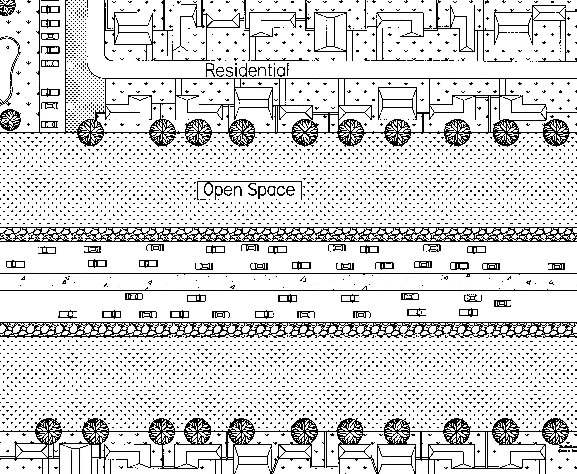
XXXVII. Elevated or Depressed Roadways Affect Sound Patterns
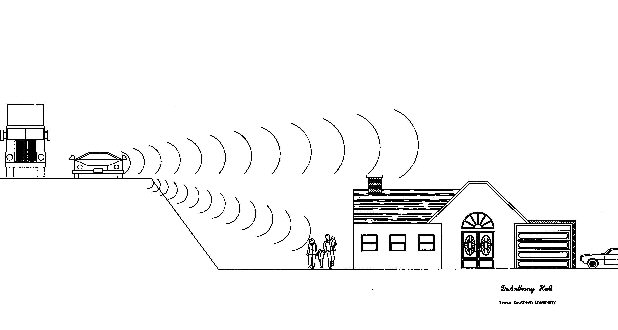
XXXVIII. Design and Construction Characteristics
- Acoustical Site Planning
- Acoustical Architectural Design
- Acoustical Construction
XXXIX. Acoustical Site Planning
- Provide a buffer zone between roadway and development
- Place single story units adjacent to roadway
- Ensure that rear yard faces roadway
- Provide landscaping & recreational features, i.e. landscaping, earthen berms, winding jogging trails
XL. Single Family with Earth Berm
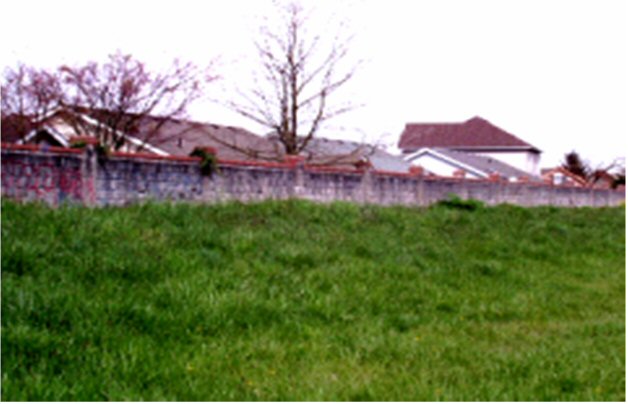
XLI. Acoustical Construction: Double Pane Doors and Windows
 |
"Soundproofing greatly reduces
interior noise penetration" |
 |
XLII. Acoustical Construction: Thicker Sound Resistant Walls - No Highway Side Windows
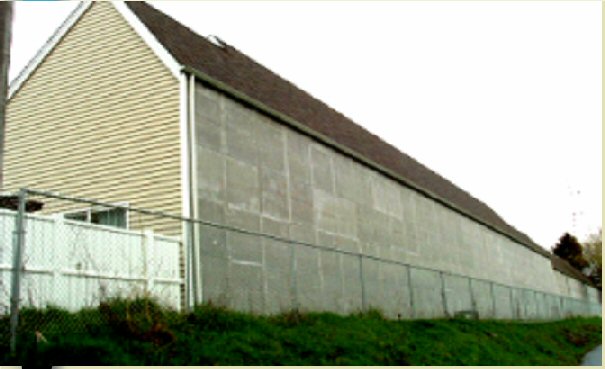
XLIII. Acoustical Construction: Thicker Sound Resistant Walls at Rear with Front Windows
XLIV. Insulation materials
 |
Acoustic Vinyl Barrier 1lb |
 |
Acoustic Vinyl Barrier 2lb QUIETBARRIER™ |
XLV. Google Search - Noise Insulation
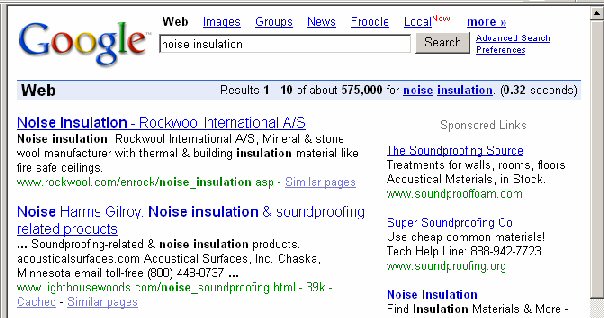
XLVI. Lesson 4
- Noise Compatible Reduction Techniques-
- Policy and Administrative Strategies
XLVII. Lesson 4 - Objective
Familiarize participants with the variety of tools available to local governments in support of NCP
XLVIII. Strategies for Municipalities
- Zoning
(Strongest category of land control)
- Clustering
- Plat Notation
XLIX. Authorities to Mandate Implementation of Noise Compatible Principles
Local Governments
Municipal Governments
L. Setbacks and Buffer Zones
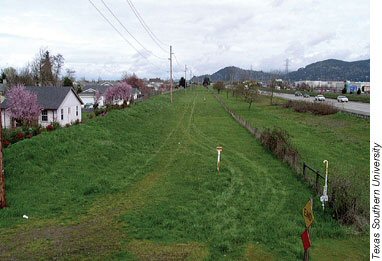
LI. Place specific language on legal documents & plats
City of San Antonio's subdivision plats state:
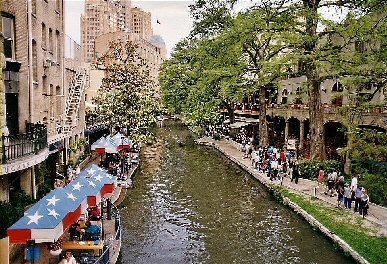 |
"For residential development directly adjacent to State right of way, the Developer shall be responsible for adequate set-back and/or sound abatement measures for future noise mitigation." |
LII. Adopt Land Use Compatible Standards Into City Codes
- Building codes
- Landscaping & screening requirements
- Noise ordinance
|
- Zoning Ordinance
- Comprehensive Plan/General Plan
- Major Thoroughfare Plan
|
LIII. Examples of Communities with Land Use Compatible Planning Practices
- Pennsylvania
- Montana
- Arizona
|
- City of San Antonio
- City of Huntington Beach
- City of Gilbert Arizona
|
LIV. Class Conclusion
We Hope You Are Encouraged !
- Look for opportunities to advise others of options to improve compatibility of roadways and adjacent land uses.
- Encourage local governments and developers to adopt these strategies.

